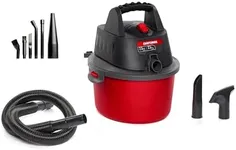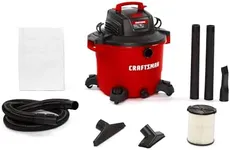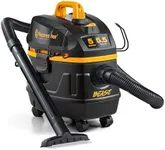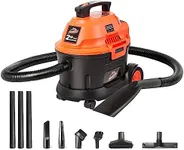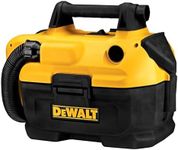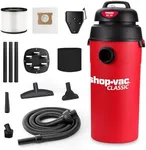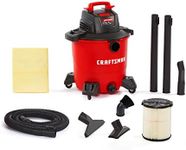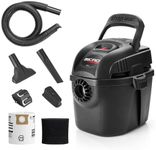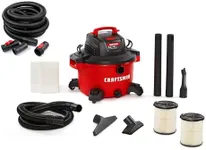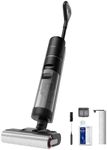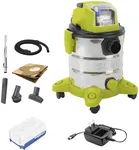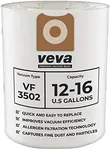Buying Guide for the Best Powerful Shop Vac
Choosing the right shop vac can make a big difference in how efficiently you can clean up your workspace, whether it's a garage, workshop, or construction site. A shop vac, also known as a wet/dry vacuum, is designed to handle heavy-duty cleaning tasks that regular household vacuums can't. To find the best fit for your needs, it's important to understand the key specifications and how they impact performance. Here are the main specs to consider when selecting a powerful shop vac.Horsepower (HP)Horsepower measures the motor's power output. It's important because it determines the suction strength and overall performance of the shop vac. Lower horsepower (1-2 HP) is suitable for light tasks like cleaning cars or small workshops. Medium horsepower (3-4 HP) is good for general use in larger workshops or garages. High horsepower (5+ HP) is ideal for heavy-duty tasks like construction cleanup or large debris. Choose based on the intensity and frequency of your cleaning tasks.
Tank CapacityTank capacity indicates how much debris or liquid the shop vac can hold before needing to be emptied. This is important for convenience and efficiency. Small tanks (2-6 gallons) are portable and good for quick, light cleanups. Medium tanks (7-14 gallons) offer a balance between capacity and portability, suitable for most home workshops. Large tanks (15+ gallons) are best for extensive, heavy-duty cleaning tasks. Consider how much debris you typically need to clean up and how often you want to empty the tank.
Airflow (CFM)CFM stands for cubic feet per minute and measures the volume of air the vacuum can move. Higher CFM means better suction and faster cleaning. Low CFM (under 50) is adequate for light tasks. Medium CFM (50-100) is suitable for general use. High CFM (over 100) is necessary for heavy-duty tasks and large debris. Match the CFM to the type of debris and the size of the area you need to clean.
Sealed Pressure (Water Lift)Sealed pressure, or water lift, measures the vacuum's ability to lift water vertically. This is crucial for wet cleaning tasks. Lower water lift (under 50 inches) is fine for light spills. Medium water lift (50-75 inches) is good for general wet cleaning. High water lift (over 75 inches) is needed for heavy-duty water removal. Choose based on how often you need to clean up liquids and the volume of liquid spills.
Filtration SystemThe filtration system determines how well the shop vac can trap dust and allergens. Basic filters are fine for general debris. HEPA filters are important if you need to trap fine dust, allergens, or hazardous materials. Consider your health needs and the type of debris you typically clean up. If you have allergies or work with fine dust, a high-quality filtration system is essential.
Hose Diameter and LengthThe hose diameter and length affect the vacuum's reach and the size of debris it can handle. A wider diameter (2.5 inches) can handle larger debris but may reduce suction power slightly. A narrower diameter (1.25-1.5 inches) is better for fine debris and tighter spaces. Longer hoses (10+ feet) offer more reach but can reduce suction power. Choose based on the type of debris and the areas you need to clean.
Portability and ManeuverabilityPortability and maneuverability are important for ease of use. Consider the weight, size, and whether the shop vac has wheels or handles. Lighter, more compact models are easier to move around but may have less power and capacity. Larger models are more powerful but can be harder to maneuver. Think about how often you need to move the shop vac and the layout of your workspace.
